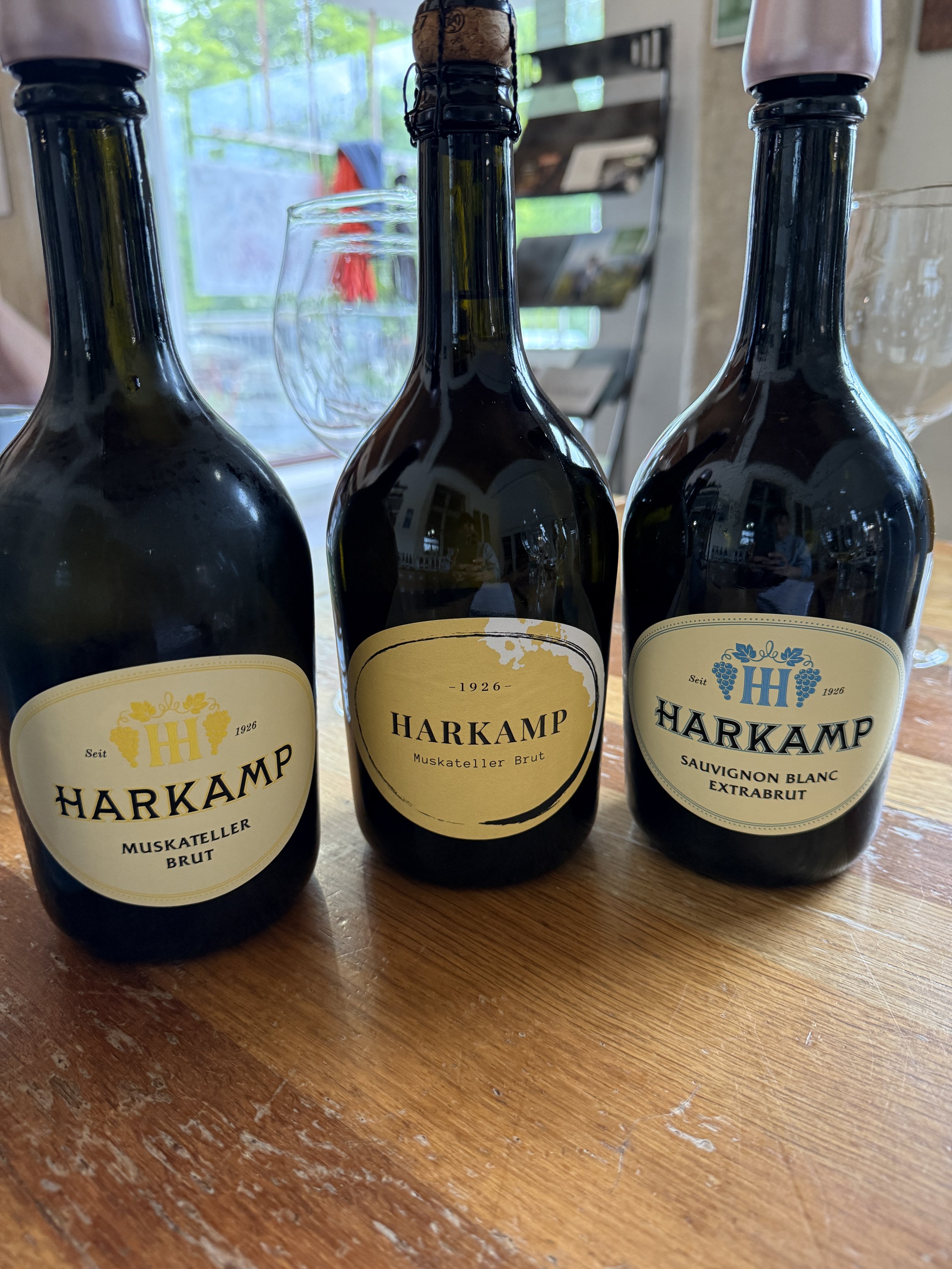WEINGUT HARKAMP
Location: Kitzeck-Sausal, South Styria
Hectares: 20
Farming: Certified biodynamic
Winemaking: Minimal sulfur only at bottling as needed, wild yeasts, 60-70% of production is traditional method Sekt
Hannes and Petra Harkamp ventured into farming and winemaking 30 years ago in the Kitzeck-Sausal region of South Styria, where the vineyards are higher, cooler, and marked with more schist than the rest of Styria. They farm 20ha all in the Sausal and 60-70% of their wines are bottle-fermented Sekt, with the balance being still and pet nat wines. A deep love of Champagne and sparkling wines led the Harkamps down the rabbit hole of making Sekt at home, and their focus slowly shifted away from still wine production. The Harkamps are THE north star for sparkling wines in this part of Austria, and are considered the preeminent natural Sekt winegrowers in Styria. They transitioned to biodynamic farming over 15 years ago and it has been a complete change of lifestyle for them, opening their farm and vineyards to more animals, flora, and insects. As Petra says, “we feel more at home as biodynamic farmers than any other time in our lives”.
Their vines are farmed in various plots and most are bottled as single-varietal wines, including everything from classic Styrian varieties like Sauvignon Blanc and Muskateller to other personal favorites of the Harkamp’s like Riesling and Pinot Noir. Vine age starts at 10 years, but most are 30-40 years old. Their vineyards are lush and undeniably happy, supporting a mix of wildlife and flora. In addition to vines, Petra and Hannes have a large quince grove as well as an apple orchard, both of which go into pet nat production. They also raise sheep and chickens at their home vineyard, Rosenberg, which is a bit of an outlier in terms of soil because there’s more red schist found here, opposed to the predominance of limestone in the rest of their vineyards.
Winemaking is hands-off, with no sulfur used in the pet nats or skin-contact wines. While not dogmatic, Hannes prefers to see what the wines need before adding sulfur. His cellar was built in 1897 and houses a combination of clay amphoras, barrel, and stainless steel. In addition to long, slow bottle fermentations for his sparkling wines, most see a minimum of 18 months of lees contact and are brut nature or extra brut. Hannes’ still wines come in 3 tiers: “Pure”, which are his simple wines that only see stainless and express a fresh fruitiness. “Substance”, which are more serious, aged in a variety of vessels, and “Terra Cotta” which are all amphora-aged skin-contact wines.







